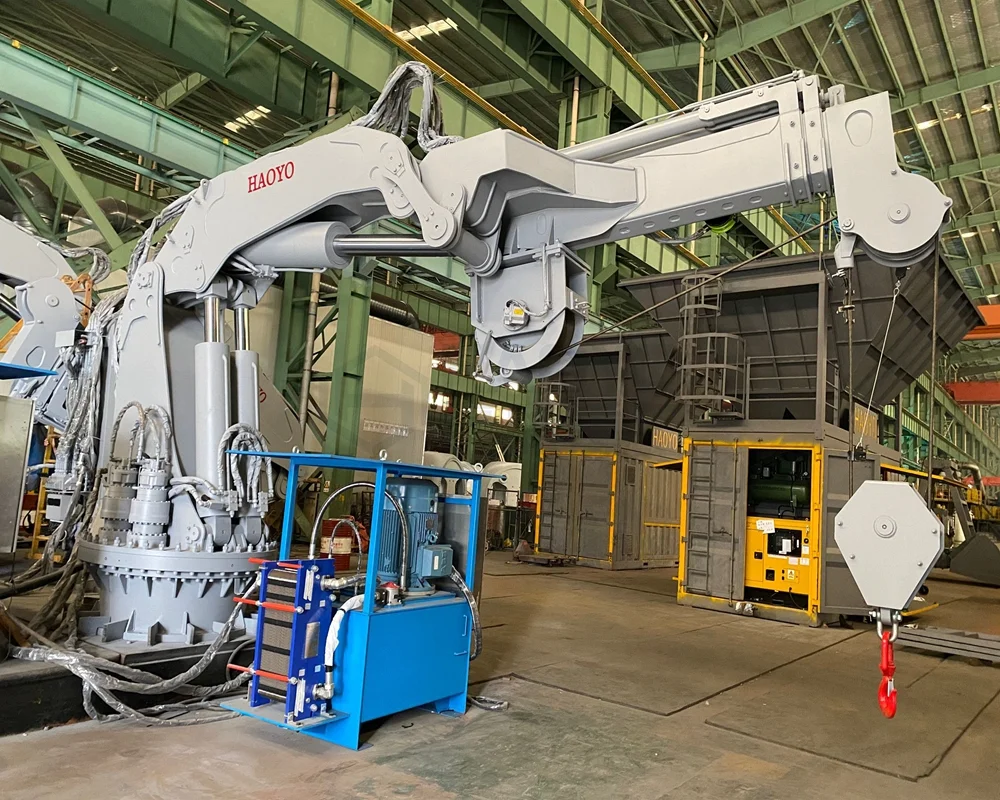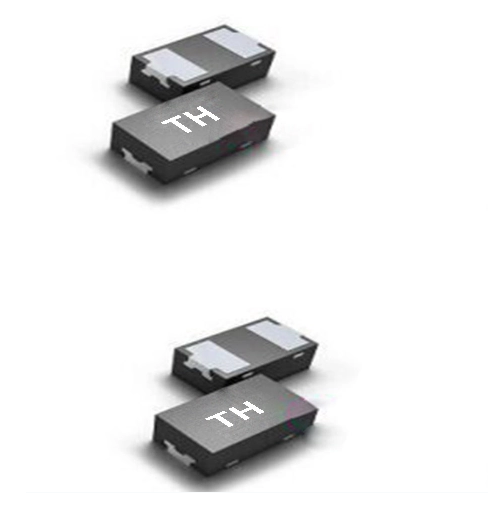In modern industry, ships, ports, platform operations and construction, crane equipment is an indispensable and important mechanical device. According to the different boom structures, cranes can be divided into two categories: "stiff boom cranes" and "flexible boom cranes". Although they are both used for lifting and transporting materials, there are obvious differences in structural design, applicable scenarios, operation methods, and cost maintenance.
This article will comprehensively analyze the core differences between stiff boom cranes and flexible boom cranes to help users deeply understand their respective characteristics, so as to make reasonable selections according to actual needs.
1. What is a stiff boom crane?
As the name suggests, stiff boom cranes adopts a rigid structure for its boom part, which is generally welded from steel into a closed or semi-closed structure with high structural strength and small deformation. This type of crane is commonly found in fixed lifting places, such as ship decks, offshore platforms, docks, factory workshops, etc.
Stiff boom cranes can achieve vertical lifting and slewing rotation. Some high-end products also support the linkage of telescopic arms and hydraulic operating systems, with the advantages of precise positioning and strong wind resistance.
Typical features of stiff boom cranes:
The boom does not deform and has strong support;
Smooth operation and strong impact resistance;
Can adapt to high-frequency and high-load work scenarios;
Support a variety of customized configurations, such as telescopic arms, hydraulic motors, electric slewing, etc.;

Simple maintenance and long service life.
2. What is a flexible boom crane?
Flexible boom crane, also known as "folding arm crane" or "articulated crane". Its boom structure is similar to that of a human arm, consisting of multiple joints (arm segments), which can be folded and unfolded at multiple angles and in multiple directions. The boom structure is relatively flexible, so it is called a "flexible" boom.
Flexible boom cranes are widely used in trucks, rescue operations, high-altitude maintenance, and narrow space operation scenarios, and are particularly suitable for environments that require frequent adjustment of lifting angles and limited space.
Typical features of flexible boom cranes:
Multi-joint structure, flexible operation;
Folding arm design, small footprint;
Particularly suitable for tasks in narrow working spaces or requiring multi-directional operations;
The operation control system is complex and requires professional training;
The load capacity is limited compared to rigid booms.
3. Differences
To help understand, the following is a detailed comparison of the two from six dimensions: structural design, operating performance, applicable scenarios, cost maintenance, safety and control system:
Structural comparison
Stiff boom cranes have a rigid boom structure, which is usually welded or cast from high-strength steel plates and has good stability and deformation resistance. This type of boom does not bend or swing during operation, the movement is very rigid, and the force transmission is relatively direct.
In contrast, the boom of a flexible boom crane uses flexible materials or structural forms, commonly including cable structures, hydraulic telescopic systems or folding arm designs, and its boom has certain bendability and adaptability during operation. Flexible booms can follow the load direction or external force within a certain range, thereby achieving more flexible operations.
Comparison of load-bearing capacity and applicable working conditions
Stiff boom cranes usually have a stronger load-bearing capacity and are suitable for environments that require high-intensity lifting, such as offshore wind power platforms, cargo ship decks, and heavy equipment loading and unloading occasions. Its stable structure ensures that high-precision and high-load lifting operations can be completed in harsh sea conditions or windy environments.
The carrying capacity of a flexible boom crane is slightly lower than that of a rigid boom. It is usually suitable for small and medium-tonnage tasks, but it performs particularly well in environments where space is limited or flexible control is required. For example, on small fishing boats, yachts, docks, emergency rescue vehicles or urban engineering work vehicles, flexible booms are more advantageous because of their easy deployment and high maneuverability.
Differences in maneuverability and operational flexibility
Rigid booms are more direct in operation, with clear motion trajectories and rapid responses during operation, and are suitable for standardized, large-scale repetitive operations. Its control system usually integrates a variety of safety mechanisms, such as overload protection, limit devices, anti-rotation functions, etc., which can meet high safety level requirements.
Flexible booms have more advantages in maneuverability. The multi-section boom design, flexible hydraulic system and precise control program enable it to complete more complex path planning and obstacle avoidance operations. Especially when operating in some narrow, tortuous or restricted areas, the flexible boom can accurately position through angle adjustment, telescopic rotation and other methods to improve operating efficiency.
Difference between maintenance and service life
Rigid booms have a relatively long maintenance cycle due to their stable structure and fewer parts. They only need to regularly check welds, bearings, hydraulic systems and electronic control devices. However, once the structure is damaged, such as bending or cracking of the boom, it is difficult to repair, and even the entire boom needs to be replaced.
Although the structure of the flexible boom is relatively complex and contains a variety of hydraulic components, hinges and transmission structures, its maintenance is mainly focused on the replacement and lubrication of the hydraulic system and soft connectors. As long as the maintenance is carried out according to the cycle and the wearing parts are replaced in time, its life performance can be comparable to that of the rigid boom.
Differences in installation methods and cost structure
The installation of rigid booms usually requires a large space and foundation support, and is suitable for fixed installation, such as offshore platforms, heavy industrial machinery, etc., which requires accurate foundation design and strength assessment in advance. After installation, the stability is extremely high, but the transformation is difficult.
Flexible booms are more widely used in mobile or vehicle-mounted equipment. They are easy to install and suitable for rapid deployment and mobile operations. They are widely used in urban maintenance, light marine equipment and rescue projects. Its initial investment cost is slightly lower, but due to the large number of parts and frequent use, the long-term maintenance cost may be slightly higher.
Application field comparison
Stiff boom cranes are widely used in:
Large-scale marine projects (such as offshore oil platform lifting)
Cargo handling at port terminals
Large-scale lifting in heavy manufacturing plants
High-precision lifting tasks for naval ships and engineering vessels
Flexible boom cranes are mostly used for:
Equipment loading and unloading of yachts or small fishing boats
Telescopic boom systems on urban engineering vehicles
Rapid deployment lifting systems in emergency rescue vehicles
Light construction sites, communication base stations, advertising installations and other occasions
4. How to choose a suitable boom crane?
In the actual procurement or use process, the selection needs to be comprehensively judged based on the following dimensions:
Working scene environment:
Open, fixed position, heavy load: stiff boom crane is recommended;
Limited space, complex path, multi-directional operation: flexible boom crane is recommended.
Budget considerations:
Rigid boom has a lower initial cost and convenient later maintenance;
Flexible boom equipment has a higher unit price, and the long-term total cost needs to be evaluated.
Operator skills:
If the operator has limited experience, a stiff boom crane is easier to use;
Flexible booms require professional training and compliant operation.
Is mobile lifting required:
If the crane needs to frequently change the work site or be mounted on a truck, a flexible boom is more suitable.
Although both stiff boom cranes and flexible boom cranes are important members in the field of lifting equipment, there are fundamental differences in their design concepts, usage methods, and technical architecture. Rigid booms are widely used in fixed lifting sites such as ships and platforms for their stability, safety, and high load capacity; while flexible booms are known for their flexibility and are more suitable for space-constrained and variable operation needs.
For users, choosing the right boom type can not only improve lifting efficiency, but also help extend equipment life and reduce safety risks. It is recommended to fully communicate with professional crane manufacturers before purchasing, clarify working conditions, performance indicators, and installation environment, and obtain customized solutions.
If you have more selection or technical questions about boom cranes, please feel free to consult our technical engineers, and we will provide you with a one-stop lifting equipment solution.
www.haoyotech.com
SHANGHAI HAOYO MACHINERY CO., LTD.

More Stories
Overseas Buyers’ Guide: Ordering ESD Diodes for Industrial and Consumer Electronics Manufacturing
Maximizing Efficiency and Precision with Horizontal Machining Centers
Mini Single Screw Extruder: Precision Engineering and High-Performance Application Guide